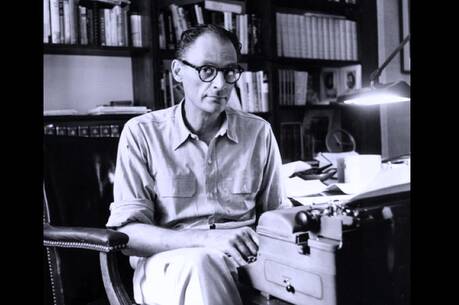The angel girls were ready on Easter morning. Their feathered wings were attached, their wreaths securely bobby-pinned to their braided heads, their pastel ribbons around their waists. The nine of them had practiced for this Mass for many hours; they had become an earthly corps of angels. They awaited their cue, then sprang into dance up the center aisle of the church as the choir sang and the congregation echoed, “Gloria! Gloria in excelsis Deo!” The angels were joyful, graceful, reverent. It was indeed a glorious Easter morn.
Soon, however, the complaints would start to sputter.
The first liturgical dancers I ever saw were at the Los Angeles Religious Education Congress about 10 years ago. The Valyermo troupe of liturgical dancers participated in prayer services and Masses throughout the weekend. They took my breath away. Though a former dancer, I had no idea you could dance at Mass. Dance added a dimension of creative physicality, of incarnate praise, of tangible beauty to our communal prayer. It wasn’t that they were performing with technical brilliance; they actually seemed to be holding back from extreme displays of flexibility and skill. Rather, they danced like people. They embodied a lovely and reverent spirituality. They were praying as much as dancing.
This was my first time attending, and my brain was exploding with good ideas about wonderful programs, much as my heart was brimming with a renewed and fervent faith. (Of course, one learns by one’s second congress to temper such drunkenness with the sobriety of what is actually doable in a calendar year.) As the rookie director of religious education, I planned to bring liturgical dance to our parish immediately.
Crash-landing into reality, I quickly learned that some of our more traditional parishioners had huge objections to my imports from Los Angeles. People stormed from meetings with grim predictions of exactly where I was going in that handbasket; people thrust into my hands single-spaced documents from Rome to set me straight. But by now I had seen a videotape of liturgical dancers at the papal visit to St. Louis. How could dance be wrong, if people danced in the presence of the pope?
Our pastor struck a compromise: I could bring in the dancing girls for prayer services, but not for Mass. With my eyes now opened, I did exactly that. Two teenage girls—one of them mine—in white skirts and purple ribbons carried incense and danced for a penance service and for an ecumenical Advent service. Both services were reverent and moving—and were boycotted by my traditionalist brothers and sisters.
Bothered by this rift in our parish community, I began to research the liturgical movement that was so maligned. The guidelines in the Documents on the Liturgy From the Second Vatican Council indicate that as long as dance is a part of the local culture and does not detract from the forward movement of the Mass, it is an acceptable form of praise. One strident woman assured me that “culture” was a code word, meaning that this passage pertained mainly to tribes in Africa, rattling their gourds and shaking their booties. But I believe dance is very much a part of American culture as well.
(Author’s disclosure: Dance is so much a part of our family that our daughters spend about 15 hours a week at a dance studio. They give up other activities in order to practice this discipline of body and mind. Instead of soccer or volleyball or basketball, dance is our sport. Pointe shoes and barres are our equipment, spandex and tulle our uniform, the dance instructor our coach, the ensemble piece our teamwork, the performance our game.)
Tap, ballet, swing, line, break, jazz, square, hip-hop, modern, ballroom—dance is in our American blood. We adults may stop taking classes, but we never stop dancing. My parents still do a mean jitterbug.
As for dance’s place in our Catholic ritual, I cite a shortened Psalm 150:
Praise the Lord!
Praise God in his sanctuary;
praise him in his mighty firmament!
Praise him with tambourine and dance;
praise him with loud clashing cymbals!
Let everything that breathes praise the Lord!
Every culture dances, for joy, for worship, for expression of emotion. Every child, at the sound of music, dances instinctively to an ancient rhythm. God dances with us, at our weddings and celebrations and holy rites of passage. Dance is another way of praying, of lifting our souls like incense. The Mass has its own sacred choreography, as we together know when to rise, to bow, to sit, to kneel, to raise our hands. Why would we ban dance from church when it is already there?
This year’s dancing Easter angels provoked the usual outcry to our new pastor, which he weathered with grace and even temper. He remains supportive. We have bought red ribbons for the girls to celebrate Confirmation this year. I believe I can sense their guardian angels swaying and clapping along with them as they practice the prayer of their jubilant dance. With arms outstretched, with shining faces aloft, they reach for God. They almost touch.








The questionably Christian shunning this good lady was treated to by her fellows in faith says all too much about how little understood is the christological perichoresis, which if it "embodies" anything gives the most sublime meaning possible to the kind of dance-accompaniment to liturgy this delightfully and generous-heartedly defiant lady espouses. God bless her, as we can be certain He does.
The human person expresses and is touched by not only verbal, musical and architectural art but also by movement. Dance is nonverbal communication that is deeply expressive. It touches the observer like music touches the listener. When the liturgical guidelines are applied to dance as to all the other art forms: real, relevant, and high quality; liturgical dance provides a richness of prayer not available through other art forms.
What I do object to is her apparent complaint that liturgical dance could be banned. Is this true? If they danced for the St. Louis papal visit, it hardly seems so. Isn’t it possible to make the case for dancing (or art, for that matter) without inviting readers to join a polemic against “traditionalists?”
I do object to her apparent complaint that liturgical dance could be banned. Is this true? If they danced at the papal visit to St. Louis, it hardly seems likely. Isn’t it possible to make the case for dancing (or art, for that matter) without inviting readers to join a polemic against “traditionalists?”
The questionably Christian shunning this good lady was treated to by her fellows in faith says all too much about how little understood is the christological perichoresis, which if it "embodies" anything gives the most sublime meaning possible to the kind of dance-accompaniment to liturgy this delightfully and generous-heartedly defiant lady espouses. God bless her, as we can be certain He does.
The human person expresses and is touched by not only verbal, musical and architectural art but also by movement. Dance is nonverbal communication that is deeply expressive. It touches the observer like music touches the listener. When the liturgical guidelines are applied to dance as to all the other art forms: real, relevant, and high quality; liturgical dance provides a richness of prayer not available through other art forms.
What I do object to is her apparent complaint that liturgical dance could be banned. Is this true? If they danced for the St. Louis papal visit, it hardly seems so. Isn’t it possible to make the case for dancing (or art, for that matter) without inviting readers to join a polemic against “traditionalists?”